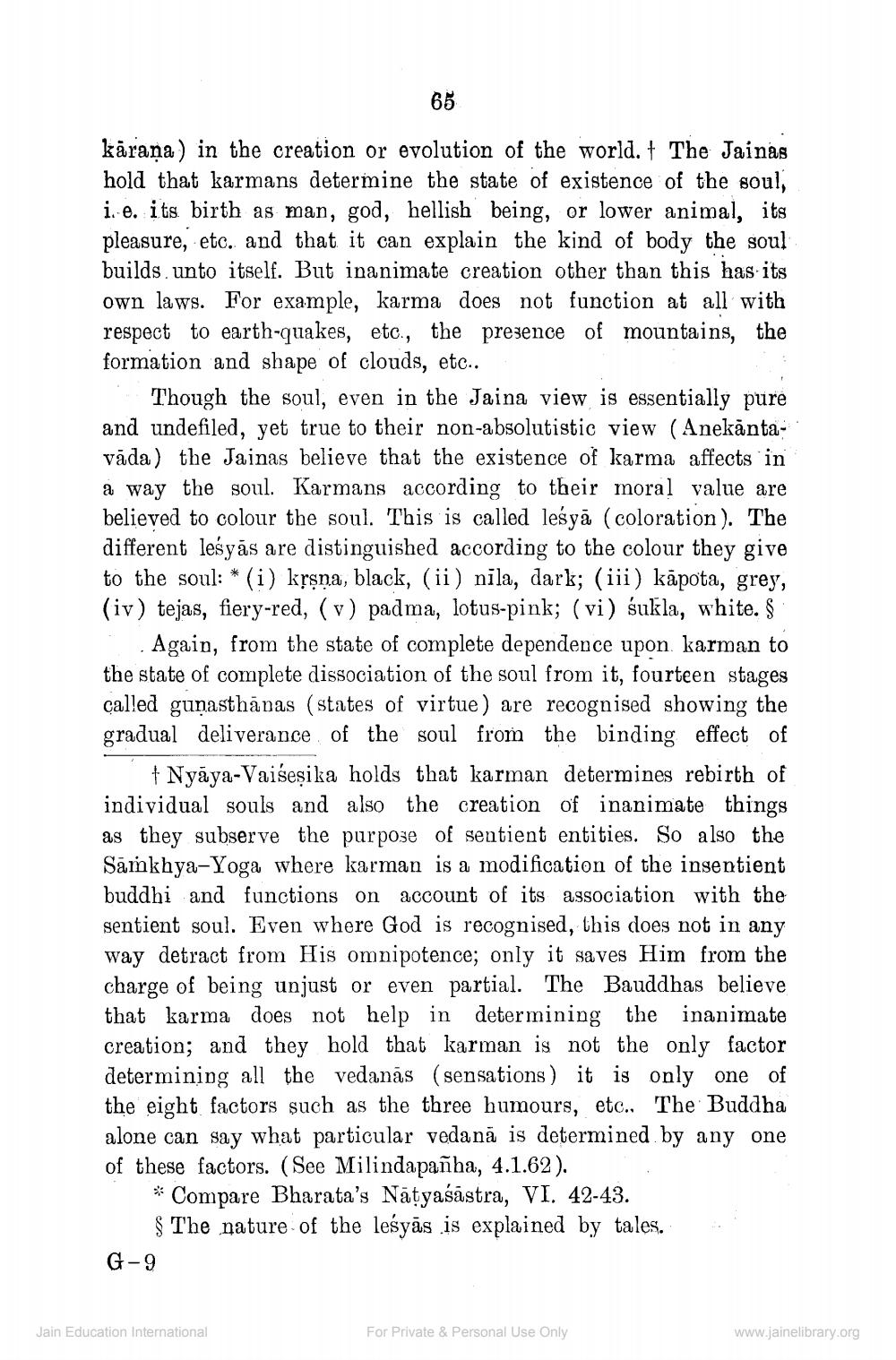________________
65
kārana) in the creation or evolution of the world. + The Jainas hold that karmans determine the state of existence of the soul, i. e. its birth as man, god, hellish being, or lower animal, its pleasure, etc. and that it can explain the kind of body the soul builds unto itself. But inanimate creation other than this has its own laws. For example, karma does not function at all with respect to earth-quakes, etc., the presence of mountains, the formation and shape of clouds, etc..
Though the soul, even in the Jaina view is essentially pure and undefiled, yet true to their non-absolutistic view (Anekāntavāda) the Jainas believe that the existence of karma affects in a way the soul. Karmans according to their moral value are believed to colour the soul. This is called leśyā (coloration). The different leśyās are distinguished according to the colour they give to the soul: * (i) kļşņa, black, (ii) nila, dark; (iii) kāpota, grey, (iv) tejas, fiery-red, (v) padma, lotus-pink; (vi) śukla, white. S
. Again, from the state of complete dependence upon karman to the state of complete dissociation of the soul from it, fourteen stages called guṇasthānas (states of virtue) are recognised showing the gradual deliverance of the soul from the binding effect of
† Nyāya-Vaišeșika holds that karman determines rebirth of individual souls and also the creation of inanimate things as they subserve the purpose of sentient entities. So also the Sankhya-Yoga where karman is a modification of the insentient buddhi and functions on account of its association with the sentient soul. Even where God is recognised, this does not in any way detract from His omnipotence; only it saves Him from the charge of being unjust or even partial. The Bauddhas believe that karma does not help in determining the inanimate creation; and they hold that karman is not the only factor determining all the vedanās (sensations) it is only one of the eight factors such as the three humours, etc., The Buddha alone can say what particular vedanā is determined by any one of these factors. (See Milindapañha, 4.1.62).
* Compare Bharata's Nāțyaśāstra, VI. 42-43.
$ The nature of the leśyās is explained by tales. G-9
Jain Education International
For Private & Personal Use Only
www.jainelibrary.org




